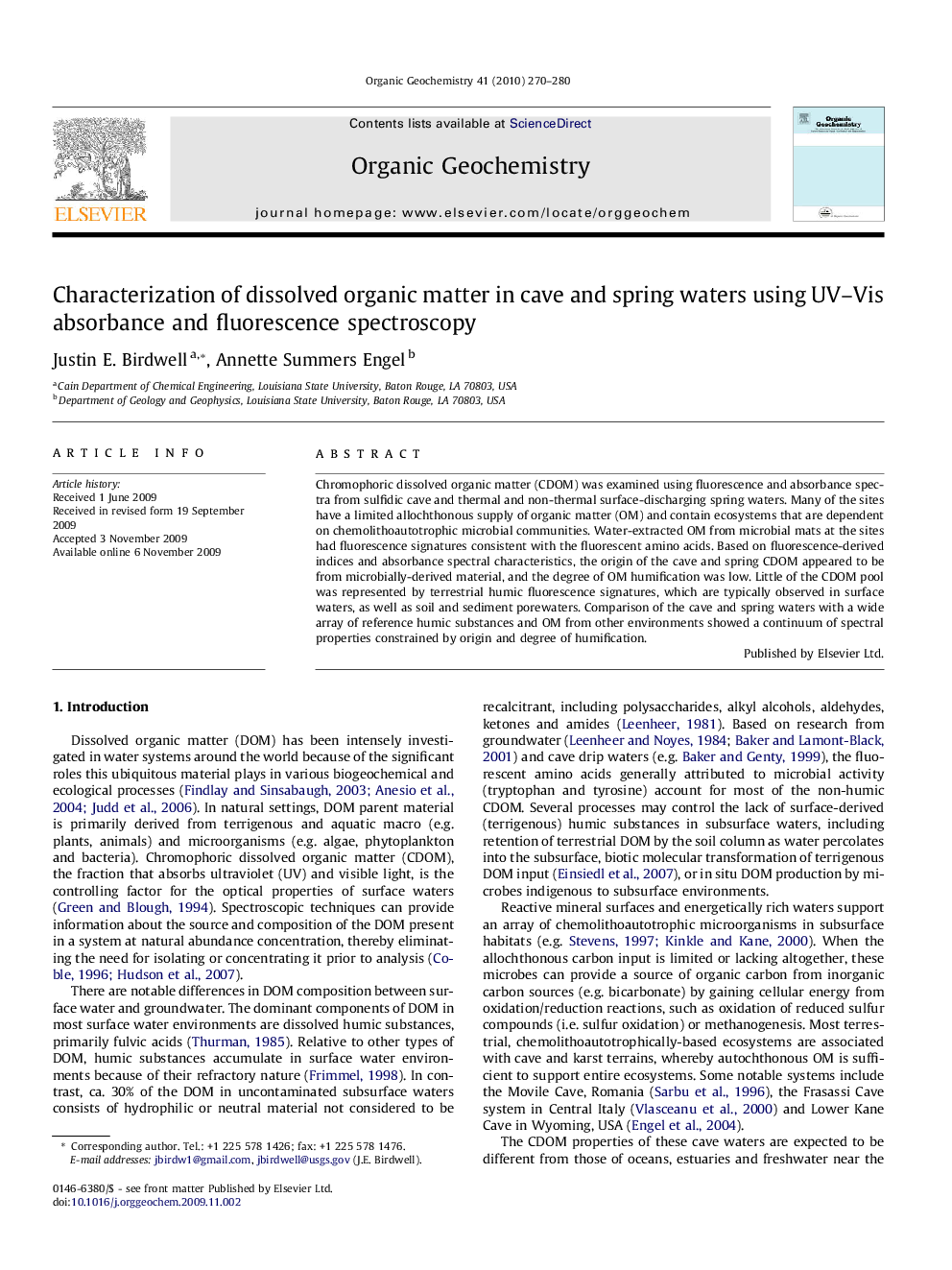| Article ID | Journal | Published Year | Pages | File Type |
|---|---|---|---|---|
| 5163384 | Organic Geochemistry | 2010 | 11 Pages |
Abstract
Chromophoric dissolved organic matter (CDOM) was examined using fluorescence and absorbance spectra from sulfidic cave and thermal and non-thermal surface-discharging spring waters. Many of the sites have a limited allochthonous supply of organic matter (OM) and contain ecosystems that are dependent on chemolithoautotrophic microbial communities. Water-extracted OM from microbial mats at the sites had fluorescence signatures consistent with the fluorescent amino acids. Based on fluorescence-derived indices and absorbance spectral characteristics, the origin of the cave and spring CDOM appeared to be from microbially-derived material, and the degree of OM humification was low. Little of the CDOM pool was represented by terrestrial humic fluorescence signatures, which are typically observed in surface waters, as well as soil and sediment porewaters. Comparison of the cave and spring waters with a wide array of reference humic substances and OM from other environments showed a continuum of spectral properties constrained by origin and degree of humification.
Related Topics
Physical Sciences and Engineering
Chemistry
Organic Chemistry
Authors
Justin E. Birdwell, Annette Summers Engel,
